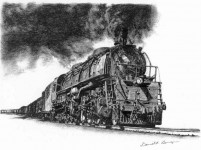Moving Train Order Signals on the C&O at Man, WV
by Jonathan Spurlock
 My dad was an operator on the C&O at Man, WV, and I can still relive the first time I ever saw him hand up orders to the crew of a moving train. I will always think of him as one of the bravest men I ever knew. You can read more about this in my first article, Passing Train Orders on the C&O at Man, WV. One of the last things he did before handing up the orders was to change the train order (T.O.) signal for the appropriate track, something I’ll explain here in … Read more
My dad was an operator on the C&O at Man, WV, and I can still relive the first time I ever saw him hand up orders to the crew of a moving train. I will always think of him as one of the bravest men I ever knew. You can read more about this in my first article, Passing Train Orders on the C&O at Man, WV. One of the last things he did before handing up the orders was to change the train order (T.O.) signal for the appropriate track, something I’ll explain here in … Read more







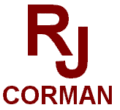 R.J. Corman’s Pennsylvania Line operates a coal train between Rosebud Mining’s Stifflertown, Pennsylvania mine in southwestern Clearfield County and their Bigler coal preparation plant in northeastern Clearfield County. It’s a 60-mile run using SD40-2 variants (SD40-2s & SD40T-2s) and 100-ton coal gondolas, formerly handled by a multitude of coal trucks (locally referred to as “coal buckets”) over public highways. The over-the-road transport was labor intensive – rail transport over already-existing rail lines was a logical step. Loading the train at Stifflertown is performed by front-end loaders at a coal dock, with the …
R.J. Corman’s Pennsylvania Line operates a coal train between Rosebud Mining’s Stifflertown, Pennsylvania mine in southwestern Clearfield County and their Bigler coal preparation plant in northeastern Clearfield County. It’s a 60-mile run using SD40-2 variants (SD40-2s & SD40T-2s) and 100-ton coal gondolas, formerly handled by a multitude of coal trucks (locally referred to as “coal buckets”) over public highways. The over-the-road transport was labor intensive – rail transport over already-existing rail lines was a logical step. Loading the train at Stifflertown is performed by front-end loaders at a coal dock, with the … 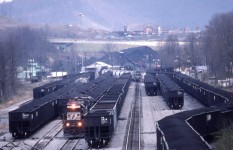
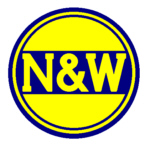 Working the N&W’s Norton yard in Southwestern Virginia required sets of six-axle locomotives. The yard has a 1% descending grade from west to east. Tracks 1 thru 8 (original numbering) hold 40 hoppers each; at 100 tons each, that is 4000 tons. One six-axle unit at Norton couldn’t handle much more than switching the caboose track. One Dash-8 would not even pull the 21 loads out of Norton Coal (switch off N&W Main at the east end of yard that crossed the Miller Yard Main of Interstate in Norton).
Working the N&W’s Norton yard in Southwestern Virginia required sets of six-axle locomotives. The yard has a 1% descending grade from west to east. Tracks 1 thru 8 (original numbering) hold 40 hoppers each; at 100 tons each, that is 4000 tons. One six-axle unit at Norton couldn’t handle much more than switching the caboose track. One Dash-8 would not even pull the 21 loads out of Norton Coal (switch off N&W Main at the east end of yard that crossed the Miller Yard Main of Interstate in Norton).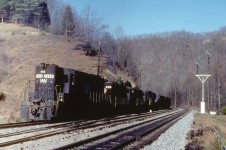
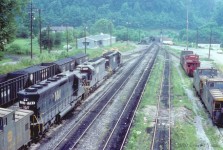
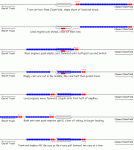

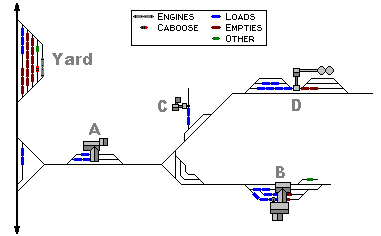

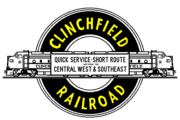 The diesel era helper operations on the South-end up to Altapass were really interesting. I think the pushers at least for coal trains often tied on before Erwin–maybe Johnson City or even Kingsport. I can remember seeing pushers cut into coal trains north of Erwin, but this was before the JC cutoff was built. I don’t know that they ever cut off at Poplar or were put on at Spruce Pine. I suppose that there could have been an occasional boost from the Spruce Pine switcher but doubt that it was a planned operation.
The diesel era helper operations on the South-end up to Altapass were really interesting. I think the pushers at least for coal trains often tied on before Erwin–maybe Johnson City or even Kingsport. I can remember seeing pushers cut into coal trains north of Erwin, but this was before the JC cutoff was built. I don’t know that they ever cut off at Poplar or were put on at Spruce Pine. I suppose that there could have been an occasional boost from the Spruce Pine switcher but doubt that it was a planned operation.